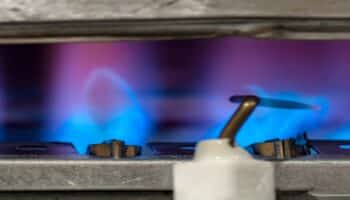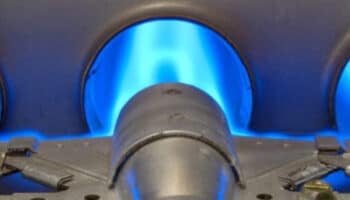This page is part of our Appliance Challenge – helping our readers save thousands of dollars in just one day’s effort. Click here to return to the challenge homepage.
Furnaces are as scary as they are fantastic.
You can’t beat being able to stay cosy or run a hot bath on a cold winter’s day. But as anyone who’s checked their energy bills will know, a furnace can also be a source of anxiety.
The last thing we want is to be stressing about every minute that we’re running our furnaces – so I’ve put together this guide to help.
Below are the best tips I’ve gathered from my own experience, and working with our appliance and HVAC experts. I’ve estimated that these tips can help save you up to $450/year in running costs, and over $3,500 overall (by making your furnace work better and last longer).
The best part? All of these savings are from just a few hours work and implementing some simple habits.
Ready to stay warmer and save some cash? Then let’s dive in.
Furnace Essentials
We’re starting out with some essential tips. These are the best ‘bang for your buck’ in terms of maximal reward for minimal effort.
#1 Watch Out for Low Humidity
Let’s start off with one of the most effective furnace best practices – making sure that you’ve got a good humidity level.
Humid air can help to hold in the heat much better. It’s sort of like its own version of insulation. If your air is super dry then your heat will fade fast, which means your furnace will be working extra hard when it doesn’t need to.
According to the EPA (Environmental Protection Agency), humidity should ideally be between 30-50%.
Solution: If you have a smart thermostat, have a check to see your humidity levels. Try to minimize any HVAC systems that might be dehumidifying the air where they don’t need to. You can also pick up a hygrometer for relatively cheap from a big box hardware store.
Assuming your home is below the suggested humidity levels, check out our guide on increasing humidity here. If you live in a dry environment, make sure to check seals around your windows and doors to prevent humid air escaping. You could also pick up a humidifier to increase the moisture in your living spaces.
By hitting that humidity sweet spot, your furnace won’t have to work as hard to raise your home’s internal temperature and keep it steady, which will lead to a lot of cost savings over time.
#2 Use the Sun to Your Advantage
Next, let’s discuss how you can use natural resources to save a lot of money.
Rooms with East-facing windows tend to be a lot warmer than those facing the West. This mainly happens because the sun’s rays hit the former for longer than they do the latter, which makes the temperature much more pleasant.

By keeping your curtains open when the sun is shining on your window, you make your furnace’s job easier. It’s going to need less gas or electricity to reach the temperature you want once you turn it on.
You could also consider spending more time on a warmer side of your home, if one room or side tends to be warmer than the other.
Likewise, consider closing any curtains or blinds in rooms without sunlight (or in the early evening). This will act like an extra insulating layer to keep your heat in. Big bonus points if you have thick curtains, which do a great job of this.
Ever been to a cold state or country and noticed they tend to have super thick curtains? Or seen a movie set centuries ago, where all the manor houses had thick curtains? It’s because they’re such good insulation throughout the winter.
#3 Insulate, Insulate, Insulate!
This one takes a little bit of work, but we can’t talk about heating bills without talking about insulation.
It’s almost impossible NOT to save money by buying and installing insulation (at least when done properly). EnergyStar estimate that homeowners can save up to 15% on heating and cooling costs when insulating attics, floors over crawl spaces, and basement rim joists.
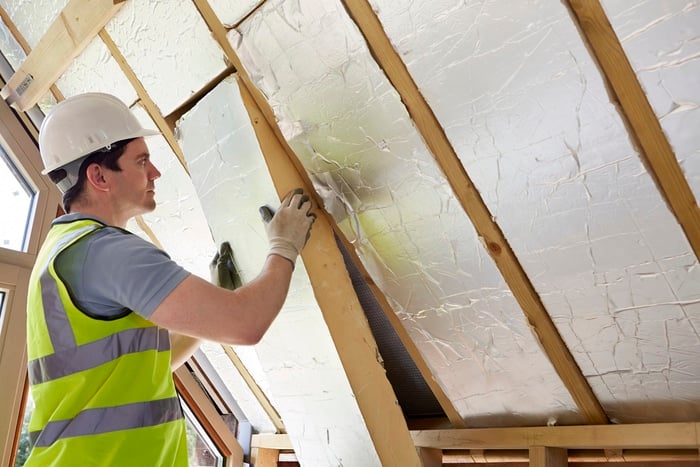
According to our HVAC expert, attic insulation is the best defense you have to keep your heating (or cooling) from escaping your home. This can often be as simple as adding insulation yourself, but doesn’t cost much to hire a contractor to do it. You will almost certainly save the money in the long run (not to mention enjoy a cosier home).
Make sure to also check for “quick-wins” by making sure you don’t have drafts around your windows and doors.
Here’s a few easy ways to spot air leaks that will be causing your furnace to work harder:
- Look at the meeting point between the window frame and the wall when the sunlight hits your windows. A properly insulated window should have no noticeable sunlight dots peeking through. If you do spot one or many, insulate the visible area and look again.
- On rainy days, run your fingers along the window frame and feel for dampness or even humidity seeping through.
- Carefully light a match next to the window and then blow it out. Use the smoke coming from it to look for air currents anywhere along the frame.
I know that repeating these steps in every window sounds tedious and time-consuming. But considering that solving any insulation problems will save you hundreds of dollars every year, I’d say it’s a neat deal!
Furnace Healthy Habits
Having covered the essentials, let’s move on to a few simple habits that can save you hundreds of dollars. Some furnace best practices will only require your attention a couple of times per year, whereas others, like those found below, might demand more frequent efforts.
#2 Use Your Oven
A while back, we talked about how you should use the power of the sun to draw and preserve heat inside your home. However, while that method is very efficient, there are other things you can try. If you love cooking or baking, you likely use your oven frequently.
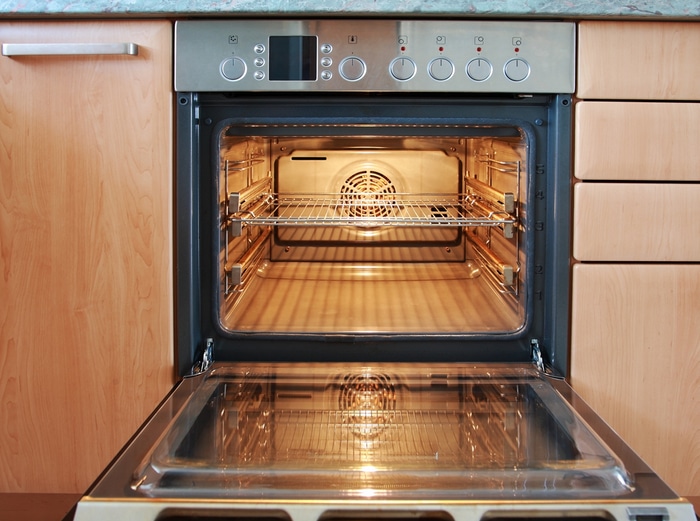
Not unlike freezers, fridges, and furnaces, ovens are designed to optimize heat preservation, which means that they can keep the surrounding air warm for hours after being turned off. Opening your oven door after you’re finished preparing your meals, you’ll keep your home warm for longer.
This will make your furnace’s job easier, as it won’t have to heat up your living spaces from scratch.
Note: Always double-check that the gas supply and your oven’s burners are off after baking.
#3 Check Your Thermostat
Another furnace best practice is ensuring that your thermostat is working normally. If you already know what this is, feel free to move on to the next section. But if not, please read on, as you’re about to acquire some useful knowledge.
In its most basic form, the thermostat inside your appliance is the component responsible for sensing and regulating the temperature in your home. This little part is what tells your furnace how hard it must work and when to turn itself off after reaching its goal.
More often than not, your thermostat should work perfectly, and there’s not much more to it. However, sometimes this component can fail, rendering your appliance useless in terms of regulation. An event like this could result in sauna-like temperatures or not enough heat generation to keep you warm, as well as excessive gas/electricity consumption with diminishing returns.
Solution: There are many ways to tell whether your thermostat is in working condition, and they vary in degree of complexity and required time.
Personally, I don’t believe that you should open the appliance right away to check it directly when there’s a much simpler alternative – listening and watching closely. Most furnaces will turn themselves on and off continuously to maintain a steady temperature for as long as they’re on. Some models will also make a soft clicking sound as they do this.
If your furnace turns itself off after it has reached what appears to be the temperature you wanted and turns itself back on when the room is cooling down, chances are the thermostat is ok. But if you spot any irregularities, you might have to replace the part.
#4 Set Your Fan Blades Clockwise
This one might surprise you, as it’s not something that you think matters until you try it yourself. Believe it or not, the direction in which you set your ceiling fan blades to spin can affect the temperature within your living spaces.
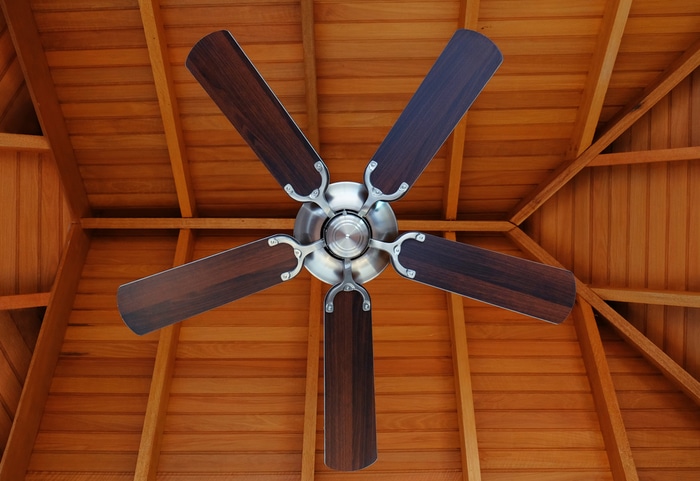
Ceiling fan manufacturers recommend setting the blades to spin counterclockwise during the summer and clockwise during the winter. The former direction sucks warm air up into the ceiling and keeps it there while blowing a cool current down, whereas the latter does the opposite.
By setting your ceiling fans to spin in a clockwise motion, cold air will be pulled to the ceiling and warm currents will be pushed down to where you are, as well as the surrounding walls. This will keep your furnace from overtaxing itself and consuming unnecessary amounts of propane or electricity.
Solution: Changing the direction in which your fan blades spin is very easy. Here’s what you have to do:
- Cut off the power to the area where your ceiling fan is.
- If the fan was on, let it come to a complete stop.
- Look closely at the fan body or the light fixture. Try to spot a switch.
- If there’s anything in the way, such as a bulb cover or any decorative elements, carefully remove them to expose the switch.
- Once you’ve located it, simply flip it to the alternate setting.
This will make your fan blades spin in the opposite direction, hopefully saving you hundreds of dollars in furnace use during cold periods.
#5 Check Your Auto-Schedules
Yet another furnace best practice that you’ll want to implement is making sure that your appliance’s Auto-scheduling feature is working for you, and not against you.
Now, what exactly does this mean?
Well, basically, if you’re in the habit of leaving for work and setting up your furnace to run while you’re away, you might be wasting power unnecessarily. Now, I’m not saying that you should never use the Auto-scheduling feature – not at all. In fact, I recommend taking advantage of it as often as possible, but always ensuring that you’re doing it right.
As you know, the main purpose of setting Auto-schedules is to keep your home warm and prompt your appliance’s fan to turn itself on and off continuously. However, setting this incorrectly could make the component work when it doesn’t have to.
Solution: If you’re not certain about how you can change your Auto-scheduling settings, refer to your user manual for all the answers you’re looking for. Assuming you no longer have it, you can always go to Google and search for “<Your Furnace’s Make And Model> User Manual”.
I recommend programming your furnace to start running about an hour prior to your arrival so that when you walk into your home, you can relax in a nice, cozy environment.
By using the right settings, you could be saving hundreds of dollars per year, and preventing premature wear and tear on your appliance.
Furnace Maintenance
Lastly, here’s a few key maintenance tips that are really worth following. These require a little more elbow grease, but they can add years to the lifespan of your furnace (not to mention help it work more effectively).
While following good habits will help to decrease your annual bills, these three maintenance checks will help make sure the furnace doesn’t break down altogether.
#1 Clean/Change the Filters Regularly
When it comes to anything related to air, filters are both a great protection and a great liability. A clean filter works great to keep your air clean, but a dirty one can inhibit airflow and cause all sorts of issues.
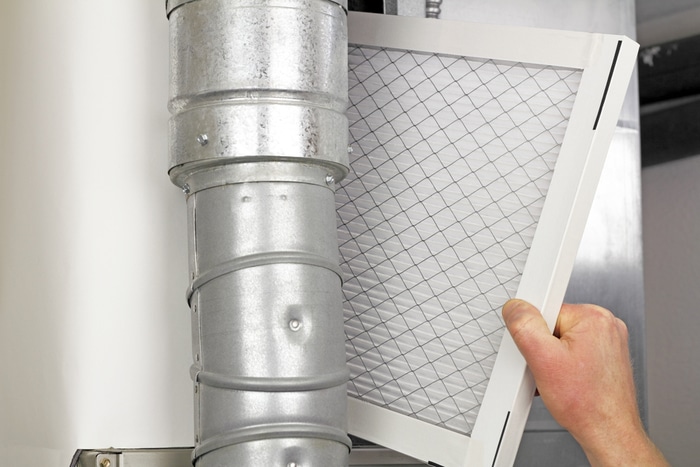
Filters trap any debris, excess dust, bugs, and any other thing that you don’t want to go into your furnace or your home. When they’re clean, they keep everything running smoothly, but as time passes, they become increasingly dirty, affecting airflow.
Depending on the furnace model you own, your filters might be replaceable or disposable. In either case, it’s a good idea to take a closer look at them and assess the situation.
Solution: Here’s how to clean or replace your appliance’s air filters. The process might vary from model to model, but the broad strokes should be the same in most cases.
- Look for your furnace’s manual for more specific instructions than these general ones. If you can’t find it, see our guide to finding any lost manual.
- Turn off the electrical switch located on either side of the appliance. If you can’t find one, switch off power at the breaker.
- Make sure the unit is cool.
- Remove the front cover panel.
- If there’s another panel beneath that one, undo the screws to remove it as well.
- Locate your air filter (it should be placed on the vent through which your furnace blows warm air to your home’s distribution system).
- Carefully remove the filter.
- If you’re not sure whether your filter is permanent, try Google searching your appliance’s make and model and see if there’s an answer there.
- If your filter is not permanent, look up your make and model again followed by the word “air filter”. This should bring up several results with online marketplaces that sell replacements.
- Once you have the right replacement, simply remove the old filter and place the new one in the appliance.
There’s no rule of thumb as to how often you should replace or clean your filters, as this will greatly depend on how much dust and pollen there is where you live, as well as on other conditions. However, it is recommended to give them some attention at least twice per year.
#2 Check the Pressure Levels
Furnaces need specific levels of pressure to safely provide the results people expect. The right level depends greatly on the make and model of the appliance, as well as its capacity, and the settings you’ll be using.
Some people might think that setting the unit to run on low pressure is the only side of the situation that can be troublesome, but this is not the case. In fact, setting it too high can also be concerning, as it might cause the appliance to overheat, reducing its lifespan significantly.
Solution: Since there are so many furnace models out there, you’ll want to check your user manual to find the right process to access your unit’s pressure valve and adjust it to your needs. I wish I could tell you there’s a one-size-fits-all step-by-step guide, but sadly, there isn’t.
There’s no shame in asking for help if you feel like you’re not up to the task. In cases like that, please make sure to call a professional to do this for you. You can still learn by watching them at work, so that next time, you can handle things on your own.
Remember, better safe than sorry!
#3 Ensure There’s Enough Breathing Room
Every time I mention this one, more than a set of eyebrows are raised, and it’s understandable.
Most temperature-generating units, like ovens, freezers, and furnaces must have a certain amount of space between them and everything else in your home to function properly.
While this varies from appliance to appliance, furnaces typically work best when other objects in a room are between 30–36 inches away.
This is enough to ensure that there’s proper airflow entering the furnace and leaving it, which often results in more efficient and quicker heating. Moreover, since furnaces can get very hot over time, keeping flammable objects too close could result in a fire or in damage to the object in question.
If you’re concerned your furnace is acting up, checking this ‘breathing room’ is worthwhile. Unfortunately it’s often a tricky issue to fix and may need a contractor to help – but it can explain a furnace that isn’t functioning properly.
Conclusion
That about covers it!
Implementing furnace best practices in your everyday life can not only save you thousands of dollars every year, but also guarantee that your appliance will run for a very long time.
I hope this article has shed a light on the most common dos and don’ts so that your appliance can run as efficiently as possible without causing you too many headaches. In most cases, simple actions, like using the Auto-scheduling feature properly, and using alternative heat sources to make your furnace’s job easier can do the trick.
On the site, you’ll find solutions for everyday appliance issues, such as a refrigerator that’s always icing over, or a furnace that’s not turning on.
This page is part of our Appliance Challenge – helping our readers save thousands of dollars in just one day’s effort. Click here to return to the challenge homepage.





